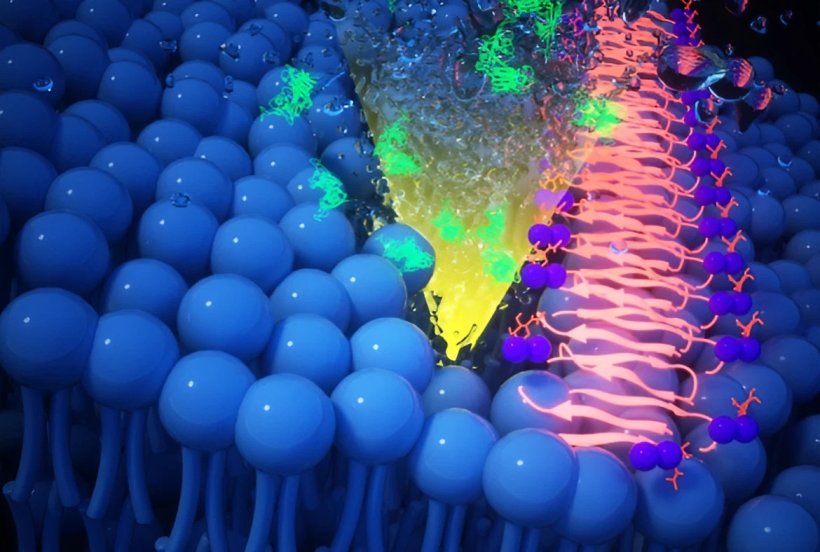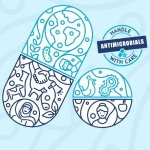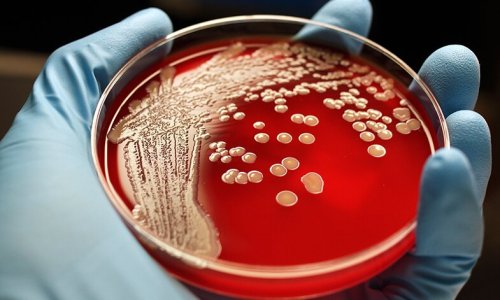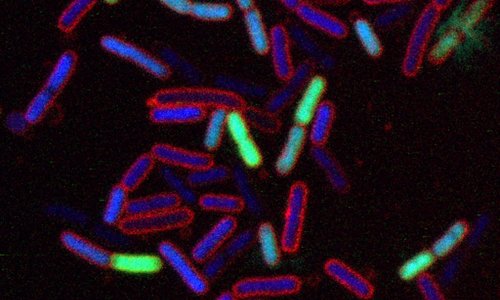
Image source: University of Liverpool
News • Potency against multidrug-resistant bacteria
Synthetic antibiotic shows promise against serious chronic infections
Nearly five million people lose their lives due to antibiotic resistance-associated infections and millions more live with poor quality of life due to treatment failures.
Antimicrobial resistance (AMR) is increasing and an AMR review commissioned by the UK Government has predicted that by 2050 an additional 10 million people will succumb to drug resistant infections each year. The development of new antibiotics which can be used as a last resort when other drugs are ineffective is a crucial area of study for healthcare researchers around the world.
A new synthetic antibiotic developed by University of Liverpool researchers is shown to be more effective than established drugs against ‘superbugs’ such as MRSA. The new study, published in in the European Journal of Medicinal Chemistry, demonstrates the potent activity of the antibiotic, teixobactin, against bacterial biofilms. Biofilms are clusters of bacteria that are attached to a surface and/or to each other – which are associated with serious chronic infections in humans.
Recommended article

Article • Bacterial defense mechanism
Antibiotic resistance: a global threat to healthcare
Antimicrobial resistance (AMR) is becoming more prevalent around the world, constituting a serious threat to public health. When bacteria acquire resistance against antibiotics, common medical procedures – for example, in surgery – become impossible due to the high infection risk. Keep reading to find out about AMR research, development of new antibiotics and antibiotic alternatives.
This work builds on pioneering research by the University’s Dr Ishwar Singh, an expert in antimicrobial drug discovery and development and medicinal chemistry. A team of researchers led by Dr Singh developed simplified synthetic versions of the natural molecule teixobactin, which is used by producer bacteria to kill other bacteria in soil. They have tested a unique library of synthetic versions of the ‘game changing’ antibiotic, optimising key features of the drug to enhance its efficacy and safety, plus enabling it to be inexpensively produced at scale.
Our study [...] opens avenues to explore the application of teixobactin in various health related biofilm contexts, including surgical site infections, implant-related surgeries and cystic fibrosis patients
Ishwar Singh
For this latest study, the researchers designed and synthesised highly potent teixobactin analogues but swapped out key bottleneck building block L-allo-enduracididine with the commercially available low cost simplified building blocks such as non proteogenic amino acids. As a result, the analogues are now effective against the broad range of resistant bacterial pathogens including bacterial isolates from patients and bacterial biofilms. This is another important step in adapting the natural teixobactin molecule to make it suitable for human use.
Dr Ishwar Singh said: “Teixobactin molecules have the potential to provide new treatment options against multi drug resistant bacterial and biofilm related infections to improve and save lives globally. Our study provides a promising foundation for further research, and opens avenues to explore the application of teixobactin in various health related biofilm contexts, including surgical site infections, implant-related surgeries and cystic fibrosis patients.”
This work is funded by Innovate UK, the Department of Health and Social Care and Rosetrees Trust. In addition to the University of Liverpool team it involves researchers from Singapore Eye Research Institute, Nanyang Technological University (Singapore), University of Ghent (Belgium), University of Utrecht (Netherlands), and the University of Lincoln (UK).
Source: University of Liverpool
04.01.2024











